私たちが生きる現代社会では、あらゆる分野の技術が目覚ましく発展し、社会や産業の仕組みもめまぐるしく変化し続けています。その中で日々直面する問題や課題は、一筋縄ではいかない複雑なものが増えてきました。一つの正解や完成されたマニュアルがあるわけでもなく、むしろ「正解がない」「前例がない」問いに対して、どう向き合うかが求められています。
こうした“答えのない問い”に取り組むために欠かせないのが、探究心と問題解決力です。情報や方法論をただ暗記するだけではなく、自分で問いを立てて深く掘り下げ、新たな知識や考え方を編み出す。それこそが未知の状況に対応するための、大きな武器になるのです。本記事では、この「答えのない問い」に挑む力をどのように育て、実践していくかについて考えてみましょう。
1. なぜ“答えのない問い”が重要なのか
社会や産業の変化が早く、既存の答えが通用しにくい
かつては、受験で出される問題にも“唯一の正解”が用意されている場合が多く、職場でも定型的なマニュアルやノウハウが機能する領域が大半を占めていました。しかし、グローバル化やテクノロジーの進展によって、社会やビジネスの環境は流動的になり続けています。
その結果、「このやり方が間違いなく正解」と言えるケースが大幅に減少してきました。どれだけ過去の成功例を真似しても、同じ結果が出るとは限らない。言い換えれば、自分で問いを見つけ、解を模索する力がますます必要になっているのです。
イノベーションは「未解決の問い」から生まれる
まったく新しいサービスや技術、あるいは社会的イノベーションは、既存の正解をなぞるだけでは生まれにくいものです。誰も答えを知らない問いに対して、「こうすれば課題を解決できるのではないか?」と試行錯誤する過程で、新しい価値や発想が育ちます。大企業やスタートアップが注目する“デザイン思考”も、ユーザーの潜在的なニーズを探るという「答えのない問い」を起点にしているのです。
2. 探究心を育むためのポイント
(1)「なぜ?」を大切にする
探究心とは、疑問に対して「なぜだろう?」と追求し続ける心のこと。子どもも大人も、日常で湧き上がる小さな疑問を見逃さず、その背後にある仕組みや背景を調べる習慣を持つことで、自然と“問いを深める”力が鍛えられます。
- 本やネットで調べるだけでなく、実際に人に話を聞いてみる
- 実験や観察をする
- 自分の考えをノートやブログにまとめてみる
など、あらゆる手段で「なぜ?」を掘り下げる経験が探究心の源となるでしょう。
(2)失敗や遠回りを肯定する
探究は、最初から正解にたどり着くためのプロセスではありません。むしろ、間違いや行き詰まりを通じて新たな視点を得るのが探究の醍醐味です。子どもが何かの疑問を解決しようとして失敗したとき、それを否定せず「じゃあ、なぜそうなったのか?」「別のアプローチはあるかな?」と問いかけることで、より深い思考へと導くことができます。
こうした失敗や遠回りへの肯定が、「試行錯誤してもいいんだ」という安心感を育み、さらなる挑戦を促すのです。
(3)多様な視点に触れる
一つのジャンルや学問だけに閉じこもっていると、思考の幅が狭くなりがちです。他の分野に触れる、異なるバックグラウンドの人と交流するなど、多様な視点を取り入れる機会を増やすことで、自分の問いをより大きな枠組みで捉えられるようになります。異文化交流や学際的なプロジェクトに参加することは、探究心を強く刺激してくれるでしょう。
3. 問題解決力を身につけるステップ
探究心によって「答えのない問い」を見出しても、それを解決するには一定のプロセスが必要です。以下に、問題解決力を高めるための基本的なステップを挙げてみます。
(1)課題を明確にする
最初に大事なのは、「実はどの部分が問題なのか」を明確にすること。漠然とした不満やトラブルでも、問題を細分化したり、重要度を見極めたりすることで、取り組むべきポイントがクリアになるでしょう。ここでの思考整理があいまいなままだと、解決策もぼやけてしまいます。
(2)情報収集と仮説立て
問題が定義できたら、関係する情報をできる限り集め、仮説を立てる段階に移ります。文献やインターネット、専門家へのインタビューなどを通じて多角的に情報を収集しましょう。ただし、単にデータを集めるだけでなく、それをもとに「こうすれば解決できるのでは?」という仮説をいくつか挙げるのがポイントです。
(3)実験・検証
仮説を立てたら、それを小さな規模で試してみる(実験やプロトタイプの作成など)が効果的です。試してみることで、想定外の問題点や新しい発見が出てくるはず。それに応じて仮説を修正し、再び検証するというサイクルを繰り返すことで、解決策がより具体的かつ実践的になっていきます。
(4)結果を振り返り、次へ活かす
問題解決の過程が一段落したら、「何がうまくいったか」「どこで苦戦したか」を振り返る時間を持ちましょう。そこで学んだことを次の課題解決や新たな探究につなげることで、自分の思考法や知識がさらに成長していきます。
4. 「答えのない問い」を育むための教育や親の役割
詰め込み型学習からの脱却
子どもに対しては、答えがあらかじめ用意された問題ばかりを解かせるのではなく、自分で問いを立てて仮説を試す機会を増やすことが大切です。プロジェクト型学習やグループワークなど、探究型の学びを取り入れている学校も増えていますが、家庭でも日常の疑問を一緒に調べたり、話し合ったりするだけで、子どもの思考力は大きく伸びるでしょう。
対話と関心を絶やさない
「どうしてそう思うの?」「どんな方法が考えられる?」といった問いかけを、親や大人が自然に行うことで、子どもは考えを深める習慣を身につけやすくなります。逆に「そんなのダメ」「これはこうするのが当たり前」と押しつけてしまうと、探究心や自発的な思考が育ちにくくなるので注意が必要です。
大人自身も“答えのない問い”に挑む姿勢
親や教育者が、自分自身の仕事や人生で未知の問題に向き合うとき、試行錯誤する様子を子どもに見せることは非常に効果的です。「大人でも分からないことがある」「失敗しながら進むことが成長につながる」と子どもが感じ取れれば、答えのない問いに挑むことを恐れなくなるでしょう。
まとめ:探究心と問題解決力が未来を切り開く
情報があふれる現代において、「答えのある問題」を解くのは、AIやロボットが得意とする領域に近づいてきています。だからこそ、人間としての強みを発揮できるのは、“答えのない問い”に立ち向かい、新たな道を切り開く探究心と問題解決力を育むことです。
- 探究心: 「なぜ?」と疑問を持ち、失敗を恐れずに深掘りしていく姿勢
- 問題解決力: 課題を定義し、情報を収集し、仮説を検証しながら解決策を導くプロセス
この二つの要素が揃えば、未知の課題にも柔軟に対応できる強さを身につけられるでしょう。親や教育者としても、子どもが自由に問いを発し、実験し、成功や失敗を通じて学ぶ場をサポートすることが大切です。そうして育った世代が増えていけば、社会全体としても新たなイノベーションや豊かな未来が期待できるのではないでしょうか。
In an Era of “Unanswerable Questions”: How to Cultivate Inquiry and Problem-Solving Skills
Today’s fast-evolving society faces increasingly complex issues and challenges. Many are not solvable by a simple formula or a single “correct” manual; rather, we often encounter “unanswerable questions” without established precedents. Dealing with such questions effectively requires inquiry and problem-solving skills—the ability not just to memorize existing knowledge but to formulate questions, delve deeper, and synthesize new ideas. In this article, we explore how to develop the mindset and capabilities needed to tackle these open-ended problems.
1. Why Are “Unanswerable Questions” Important?
Rapid Changes Render Existing Answers Less Reliable
In the past, standardized tests often had a single correct answer, and workplaces relied on manuals and proven methods. However, globalization and technological progress have made business and social environments more fluid. It’s now rare to have a guaranteed “right way.” As a result, the ability to identify problems and search for solutions is becoming ever more crucial.
Innovation Emerges from “Unsolved Questions”
Completely new services, technologies, and social innovations seldom arise by following preexisting solutions alone. True innovation emerges from addressing unknown questions: “How can we solve this challenge?” The process of trial and error spawns fresh ideas and insights. For example, many large corporations and startups adopt design thinking precisely because it begins by probing “unanswerable questions” about user needs.
2. Nurturing Curiosity (Inquiry)
(1) Valuing “Why?”
Curiosity means consistently asking “Why?” about the things around us. Both children and adults can boost their ability to form deeper questions by noticing and investigating small daily curiosities. Examples include:
- Looking things up in books or online—and talking to relevant people
- Trying small experiments or careful observation
- Writing or blogging about discoveries and reflections
Such efforts to dig into “Why?” build a foundation for a more in-depth inquiry process.
(2) Embracing Failures and Detours
Inquiry doesn’t aim to find correct answers from the start; it relies on mistakes and dead ends to reveal new perspectives. Rather than criticizing a child for failing, encourage them to think, “Why didn’t it work?” or “Could we try a different approach?” This approach reassures them that trial and error are normal, fueling further challenges.
(3) Exposing Oneself to Diverse Perspectives
Restricting yourself to a single field or discipline narrows your thinking. By engaging with other domains or meeting people with different backgrounds, you expand your mental framework and see your questions in a broader context. Interaction with other cultures or interdisciplinary projects can strongly stimulate curiosity.
3. Building Problem-Solving Skills
Even if curiosity reveals “unanswerable questions,” you need a specific process to solve them. Below are some foundational steps to honing problem-solving:
(1) Defining the Issue Clearly
First, clarify exactly which aspect is problematic. Vague complaints become more workable when broken down or prioritized. Failing to define the problem leads to hazy solutions.
(2) Information Gathering and Forming Hypotheses
Having clarified the problem, collect relevant information from reading, expert interviews, or online research, then propose several hypotheses. Gathering data alone isn’t enough; you must also ask, “How might we solve this?” at an early stage.
(3) Experimenting and Testing
After forming hypotheses, test them on a small scale. By seeing unexpected flaws or discoveries during trials, you can refine your hypotheses and cycle back to further experimentation. Repeating this cycle yields more specific, practical solutions.
(4) Reflecting and Applying Lessons
Once you’ve reached a temporary resolution, review what went well and what was difficult. Documenting these lessons guides future challenges, steadily improving your thinking strategies.
4. The Role of Education and Parenting in Fostering “Unanswerable Questions”
Moving Beyond Rote Learning
Encourage children not just to solve questions with pre-set answers but to pose their own questions and test possible solutions. Project-based learning and group work in schools—plus everyday discussions at home—can expand a child’s thinking.
Keeping Conversation and Interest Alive
Parents can ask questions like “Why do you think that?” or “What methods might we use?” to naturally deepen children’s thought processes. Avoid shutting down children’s ideas by labeling them “wrong” or imposing “the only correct way,” as that undermines their curiosity.
Adults Leading by Example
When parents and educators face their own unknowns at work or in life, displaying trial and error proves highly motivating for children. Watching adults navigate the unknown teaches them, “It’s okay not to know everything,” and that failing often leads to growth.
Conclusion: Inquiry and Problem-Solving Drive Our Future
In an age saturated with information, AI and robots excel at solving problems that do have standard answers. Hence, human strength becomes most valuable in tackling open-ended questions and forging new paths through inquiry and problem-solving.
- Curiosity: Persistently asking “Why?” and daring to explore deeply despite potential failures
- Problem-Solving: Clarifying challenges, gathering information, iterating hypotheses, and implementing solutions
These twin abilities make one adaptable to unknown challenges. Parents and educators can support children by providing an environment where they can freely question, experiment, and learn from both success and failure. If more young people develop such capabilities, society at large could unlock greater innovation and a more fulfilling collective future.




コメント